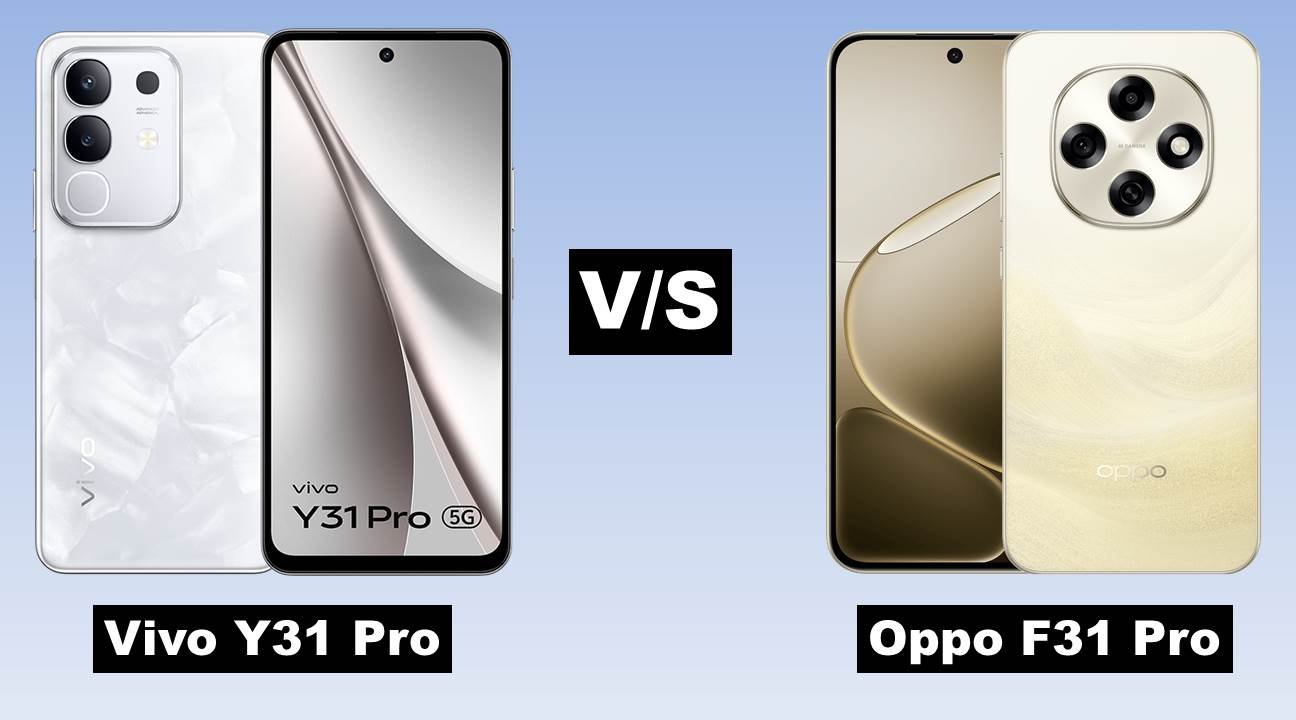
The mid-range smartphone market in India just got more exciting with the launch of two new contenders — the Vivo Y31 Pro and the Oppo F31 Pro. Both models arrive with modern designs, powerful chipsets, and 5G support, but they cater to slightly different user preferences. Let’s take a closer look at their features, performance, and value to see which one makes more sense for you.
The Vivo Y31 Pro has a glass front with a plastic frame and back, weighing about 204–208g. It is IP64-rated, making it resistant to dust and water splashes, but not fully waterproof.
The Oppo F31 Pro, on the other hand, takes durability up a notch. It weighs 190g, comes with IP68/IP69 ratings, and can withstand high-pressure water jets and submersion up to 1.5m for 30 minutes. This makes the Oppo option more rugged and practical for those who prioritize protection against the elements.
Vivo equips the Y31 Pro with a 6.72-inch IPS LCD panel supporting 120Hz refresh rate, 960Hz PWM dimming, and up to 1050 nits of peak brightness. It’s sharp and fluid but limited compared to AMOLED technology.
The Oppo F31 Pro uses a 6.57-inch AMOLED display with 1B colors, 120Hz refresh rate, and a higher peak brightness of 1400 nits. It also comes with DT-Star D+ protection, making it better for outdoor usage and media consumption.
Both devices run on the MediaTek Dimensity 7300 (4nm) chipset with an octa-core CPU and Mali-G615 MC2 GPU. This ensures reliable performance for daily tasks and even gaming.
The Vivo Y31 Pro runs Android 15 with Funtouch 15, while the Oppo F31 Pro ships with Android 15 and ColorOS 15. While both are feature-packed, Oppo’s ColorOS is known for its customization options and additional optimizations.
The Vivo Y31 Pro features a dual rear camera setup with a 50MP main sensor and a 2MP depth sensor, supported by a ring-LED flash. On the front, it offers an 8MP selfie camera. Video recording maxes out at 4K@30fps for the rear and 1080p@30fps for selfies.
The Oppo F31 Pro goes much further in this area. Its dual rear camera includes a 50MP OIS-enabled main sensor and a 2MP depth sensor. It also features a color spectrum sensor, enhancing dynamic range and accuracy. On the front, you get a 32MP selfie camera capable of shooting 4K videos. For content creators and selfie lovers, Oppo clearly has the edge.
Both phones offer stereo speakers but drop the 3.5mm headphone jack. The Vivo Y31 Pro supports Hi-Res audio (24-bit/192kHz), while Oppo enhances connectivity with Wi-Fi 6 and aptX HD Bluetooth support, giving it an edge in streaming and gaming scenarios.
Battery performance is a major differentiator.
Vivo Y31 Pro: 6500mAh battery with 44W fast charging, reaching 50% in about 40 minutes.
Oppo F31 Pro: 7000mAh battery with 80W wired fast charging and support for multiple charging standards, reaching 37% in just 20 minutes. It also supports reverse wired charging.
Clearly, Oppo dominates this category with a larger capacity and faster charging speeds.
Choose the Vivo Y31 Pro if you want an affordable 5G phone with a big battery, solid display, and decent performance at under ₹20K.
Choose the Oppo F31 Pro if you prefer premium durability (IP68/IP69), a superior AMOLED display, better cameras with OIS and 4K selfies, and faster charging.
In short, the Vivo Y31 Pro is a value-for-money device, while the Oppo F31 Pro targets users who are willing to spend extra for flagship-like features in a mid-range package.
Comments